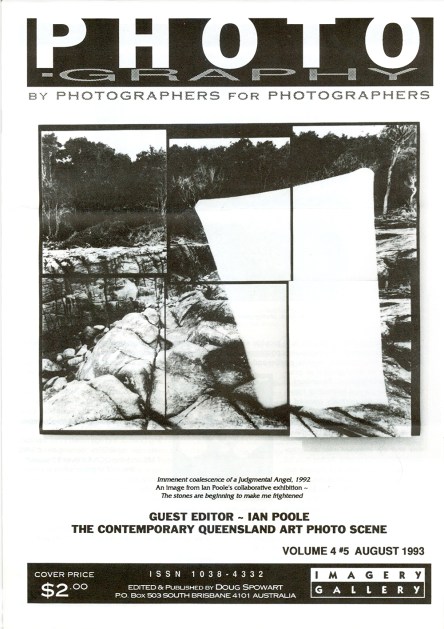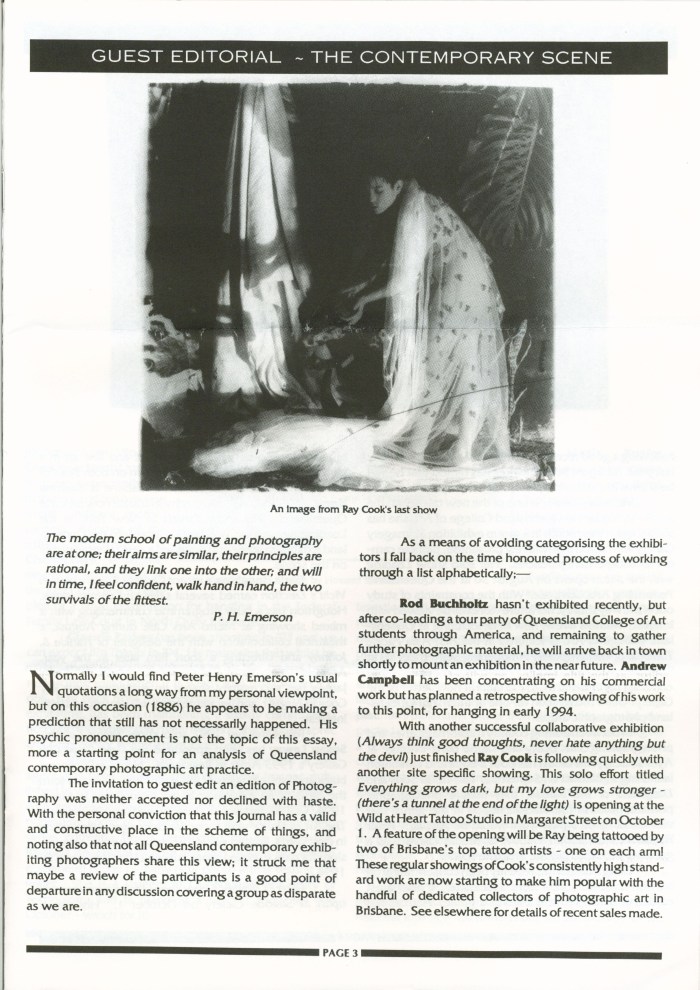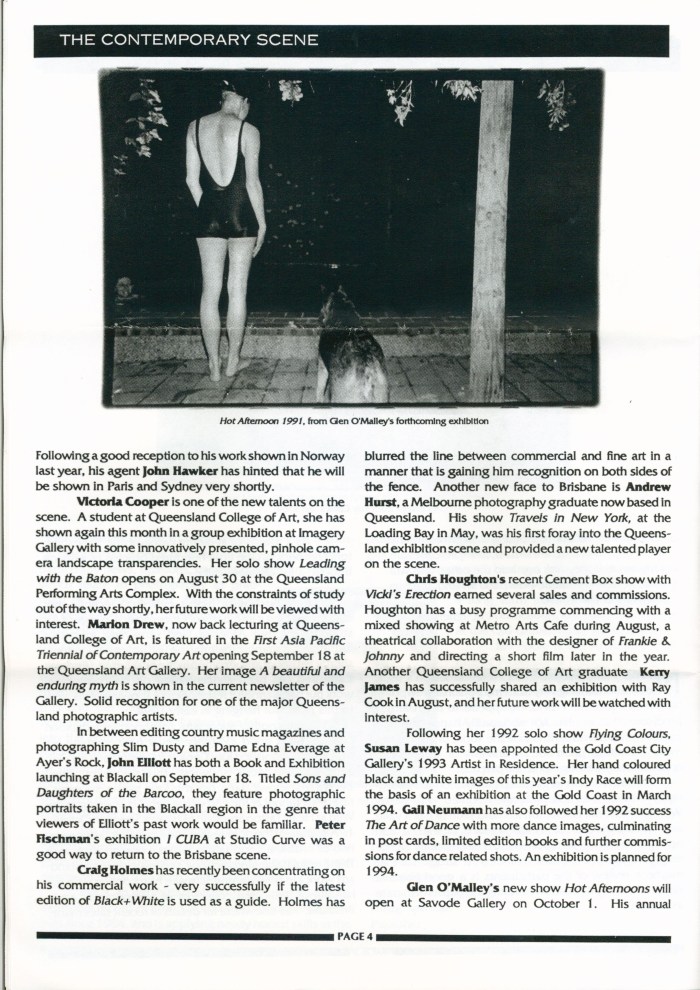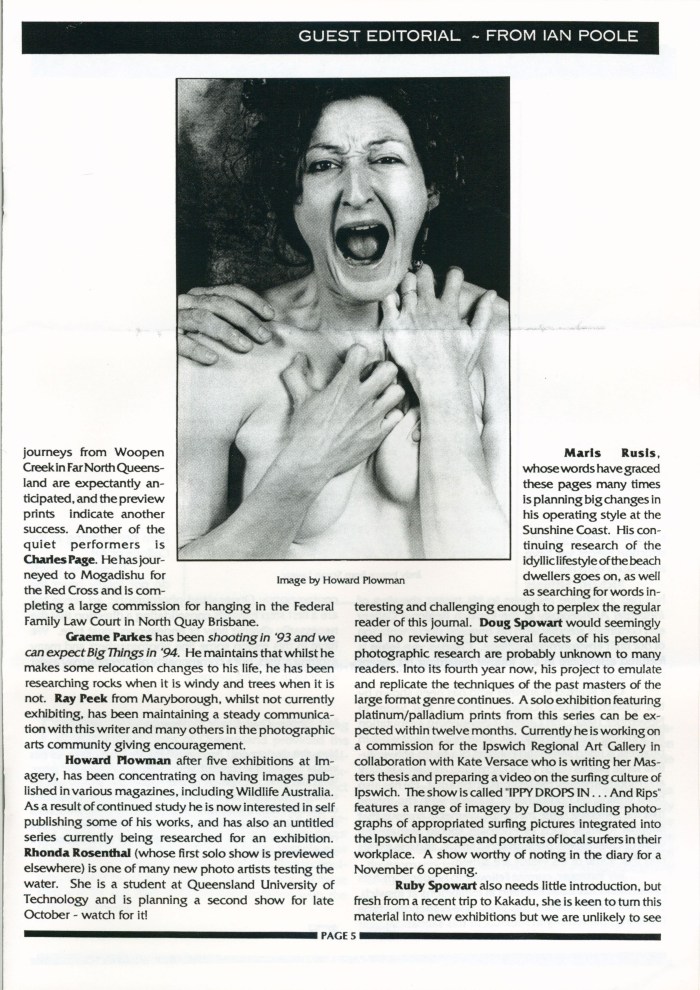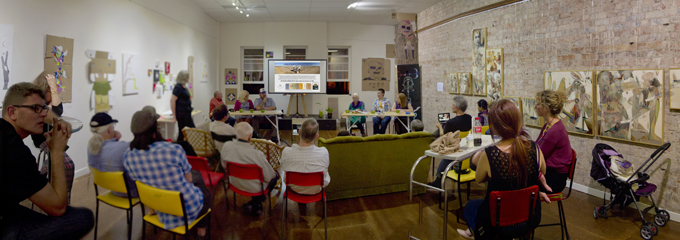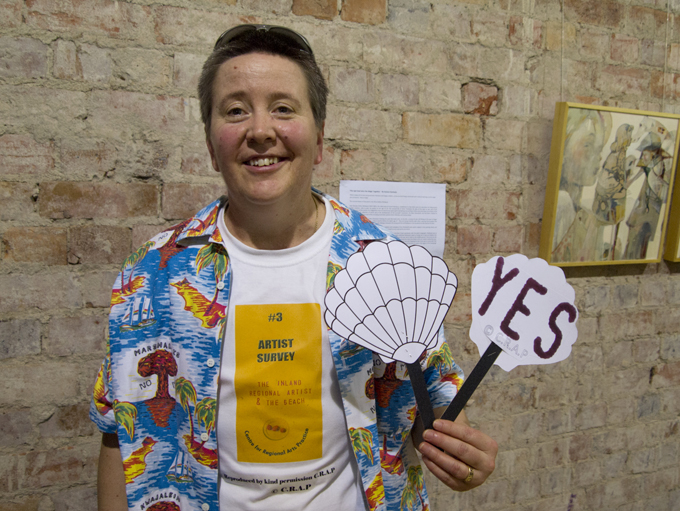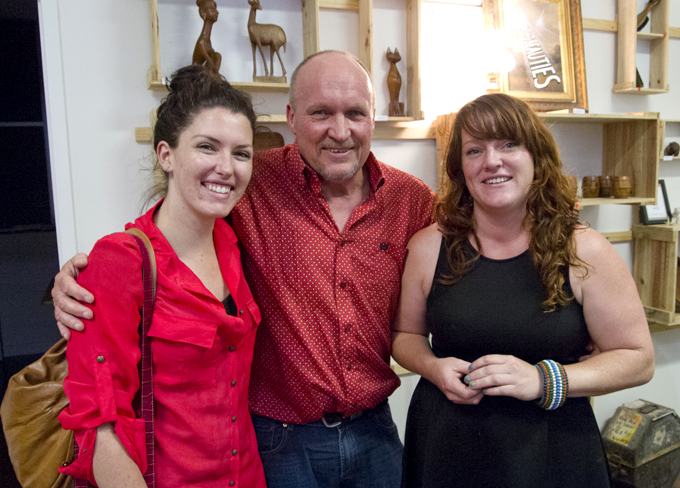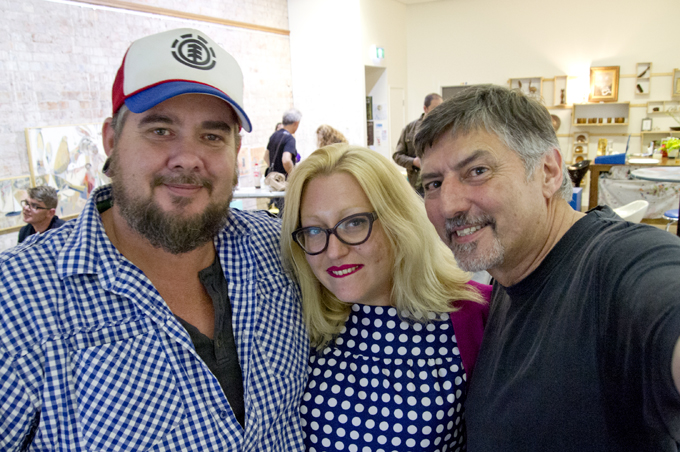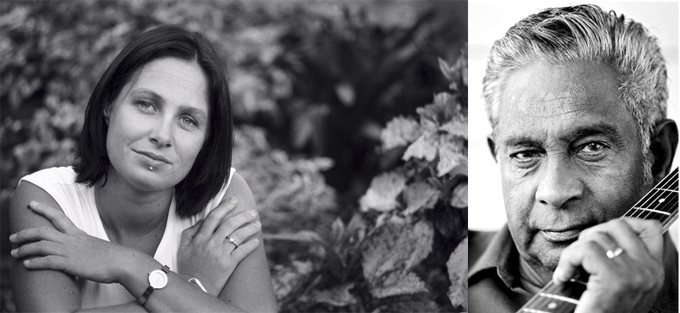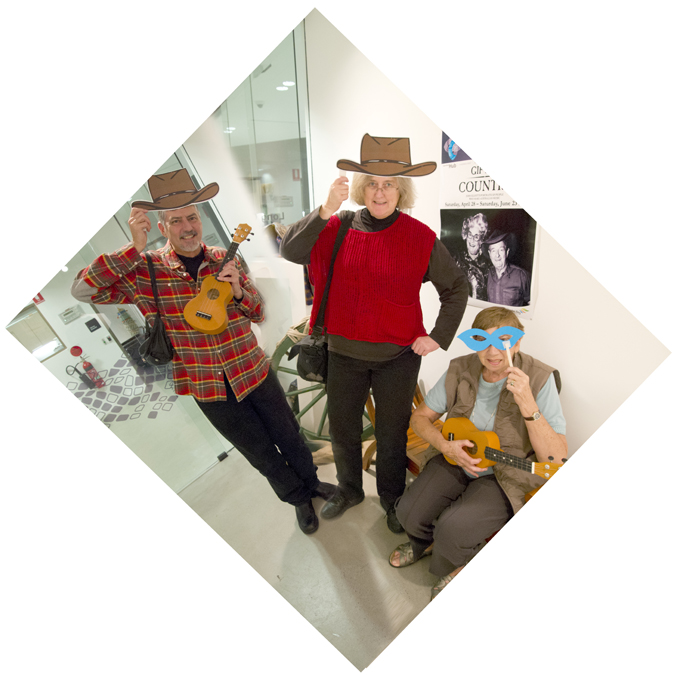Posts Tagged ‘John Elliott’
COOPER+SPOWART – JOURNEY NORTH
.
We are travelling up to north Queensland at the end of September for a month of artists’ book and photography projects, workshops and lectures.
.
.
Our Journey …
.
September 27 ROCKHAMPTON: CAPRICORNIA PRINTMAKERS
We will present an evening talk about our artists books/photobooks and the Siganto Foundation Research Fellowships work we have been doing in the Australian Library of Art at the State Library of Queensland.
.
.
September 29 MACKAY: ARTSPACE MACKAY as part of the LIBRIS AWARDS PROGRAM
Here are the details…
.
.
October 2-8 ORPHEUS ISLAND
Here are the details…
.
.
October 16-22 WINTON: NOCTURNE WINTON – To be confirmed
See our other Nocturne Projects … HERE
A few images like those we could be making at Winton follow…
.
.
.
CONTACT US FOR DETAILS OF ANY OF OUR JOURNEYS NORTH ACTIVITIES
.
.
1993 THE BRISBANE PHOTOGRAPHY SCENE: Ian Poole Guest Editor
From 1990 to 2001 I edited and published a journal called PHOTO.Graphy (ISSN 1038-4332 and earlier called ‘News Sheet’). This journal was created to fill a gap in the discussion, critique and commentary about a segment of the photography discipline within Australia. Occasionally I would engage guest editors to add their voice to the conversation. Ian Poole was the Guest Editor for Volume 4 #5 – Here is my Editorial introducing to Ian’s view of the art photography scene in Queensland in 1993.
Ian’s survey of the Queensland art photography scene makes for interesting reading nearly 25 years on… Mentioned in the survey are; Rod Buchholtz, Andrew Campbell, Ray Cook, Victoria Cooper, Marion Drew, John Elliott, Peter Fischman, Craig Holmes, Andrew Hurst, Chris Houghton, Susan Leway, Kerry James, Gail Newmann, Glen O’Malley, Charles Page, Graeme Parkes, Ray Peek, Howard Plowman, Rhonda Rosenthal, Maris Rusis, Doug Spowart, Ruby Spowart, Richard Stringer, Carl Warner, Jay and Younger. Charles A. von Jobin is also featured in the issue.
.
A PDF of the full issue is available HERE: PHOTO.G-Vol4n5r.
THE RANGE: Centre for Regional Arts Practice Event
ARE YOU A REGIONAL ARTIST?
The Centre for Regional Arts Practice (C.R.A.P.) event, ‘Are you a regional artist?’ was part of the 2012 RANGE festival of art and culture program. Attended by around thirty people from around the Toowoomba region the event took place at The GRID Creative Space. The stimulus for the event and its question is the series of artist survey books produced by C.R.A.P. founders Victoria Cooper and Doug Spowart. Topics covered by the books deal with the issues and the experiences that Cooper and Spowart have encountered over many years as regional artists. Surveys have included the following titles:
#1 How do you know you are a regional artist?
#2 How do you now you operate a regional arts business?
#3 The inland regional artist & the beach
#4 The regional artist & climate change
#5 The regional artist & the global financial crisis
#6 Swine flu & the regional artist
#7 Air travel & the regional artist
#8 Flooding in your studio
#9 Summer lethargy
#10 The New Zealand regional artist
#11 Vote 1: Campaign for Regional Artists for Government Election (Democracy)
#12 Checklist of the signs that extractive mining has taken over your regional community.
Six local artists accepted the invitation to participate in the event by selecting an artist survey book that related to their experiences and interests. They were asked to select passages from the books and to present and discuss these passages. The artists were: Jack Atley, Fancy Darling, John Elliott, Elysha Gould, Sue Lostroh and Jennifer Wright (Summers) [Their Bios are included at the end of this post]. The panel members represent a diversity of practice which is both grounded by necessity but also enjoying the freedom to be at the creative edge. Toowoomba’s art community is evolving and seemingly drawing strength from a fertile montage of place-minded inclusivity along with strident individualism. This motivated group of young and established artists are moving with the changing landscape of the regional arts practice, while also operating within a national and global perspective.
The Artist Survey books acted as catalyst and provocateurs for discussion and commentary where each panellist presented a particular slant on their selected subject. What followed was an organic and freeform forum with a range of questions being discussed and challenged. The main theme—the identity crisis of regional artist—was at the centre; the responses made the issues relevant, while evoking alternative considerations.
After each panellist’s segment the audience was asked if the ‘agreed’ or ‘disagreed’ with the proposition put by each Artists Survey Book. Some topics, such as ‘Do you need a week at the beach’, ‘How do you know if you operate a regional business’ and ‘The signs that mining has taken over your community’ resulted in a majority support. Other books, including ‘Would you agree that regional artists should form their own political party’ and ‘The regional artist and the GFC’, drew out other interesting issues and challenges from the panel and attendees beyond just the questions posed in the books. In some cases the outcome of the discussion recognised that all artists, from both regions and city, connect with the same issues. Perhaps all artists are regional?
From the panellist’s responses it became evident that regional artists are passionate people with opinions and ideas about their practice and the opportunities and challenges of regional life. The feedback coming from some of the informal discussions at the end of the night suggested there could be future events of this nature in the form of a forum.
From our perspective this event brought not just consensus, but importantly new perspectives on, and challenges to, what it means to be a regional artist living and working on The RANGE.
Finally, attendees were invited to contribute comments to the forthcoming Artists Survey Book ‘The regional artist and the artists run initiative’. This edition of the C.R.A.P. Artist Survey book is intended to celebrate the role of the ARI in the Toowoomba region—the main theme of The RANGE festival.
Until next time …
PANELIST’S BIOS
Elysha Gould is a visual artist and Co-Director and founder of the artist-run initiative, made.Creative Space Toowoomba, and is the current Supervisor of Dogwood Crossing arts and cultural facility in Miles, Queensland. Living as an expatriate during the formative years of her childhood and having a mixed Australian-Japanese heritage, Elysha’s work incorporates paper cutting, drawing and installation that explore ideas of cross-cultural representations, contrasting contexts in the imagery and materials she uses.
Sue Lostroh was born in Sydney half a century ago, now living and working in Toowoomba, Sue has various tertiary qualifications the latest being a Master of Philosophy. However her study now happens on her travels to various destinations including Hong Kong, Singapore, England, Belgium, Holland, Germany, Italy, Switzerland, and France so far. Sue trained as a printmaker but turned into an installation artist who has held a handful of solo exhibitions, her favourite was at the National Sculpture Forum in Canberra: Adopt my language say your farewells. She has participated in over 35 group shows in a variety of locations including Singapore, Brisbane and Toowoomba and she has a wide and varied arts experience curating about 80 exhibitions since 1987, she was an associate lecturer in visual arts and has supervised various research projects for students undertaking professional development. Sue is associated with the production, editing or authoring of over 30 exhibition catalogues, 4 CDs and a considerable number of education kits, didactics and exhibition support material. Sue currently coordinates the education programmes at TRAG
John Elliott is a writer/photographer based in Toowoomba and works all over Australia. He has 14 books to his credit, had his own exhibition at the National Portrait Gallery and 25 works are in the NPG Collection. John’s work centres around his love of the bush and interest in people’s stories.
Jennifer Wright (Summers) is President at Arts Council Toowoomba and advocate for the establishment of Toowoomba Regional Council’s Public Art Policy. She enjoys building respectful relationships between councillors, businesses, artists and local community members. Jennifer was chosen to win the 2012 Regional Arts Australia award because she has demonstrated an outstanding contribution to the Arts in her community, her commitment to creating opportunity for regional artists and tireless volunteering work.
Fancy Darling is an artist and musician. Painting and drawing the erotic, classically trained pianist singer songwriter and cabaret performer, currently a resident artist at the grid.
Jack Atley: punk rock warlord.
JOHN ELLIOTT’s ‘GIFTED COUNTRY’
An image of the ballad of country and western
As a photographer attempting to communicate personal experiences and my, at least I think, special view of life and the world, occasionally I have thoughts that if I wanted to connect en mass I should have been into music! When I look at what music does to I see participants who will slap, tap, hum, whistle, laugh, tear up and even cry. Music sure beats the visual arts hands down as a way of creating a connected audience response. But an exhibition of photographs at the Caboolture Regional Art Gallery, just a few kilometres north of Brisbane, may just win some points back for the visual artist.
Gifted Country is a photographic exhibition of the doyens of the world of country and western music by Toowoomba photographer John Elliott. As a follower of the music industry for over 30 years Elliott has amassed a collection of the latest top hits and the golden oldies. On the walls of the gallery the faces of C&W music stare out at the viewer — frozen and mute. Elliott has reduced them to an eye-only sensory experience. The only sounds permeating the space are the shuffle of footsteps of other gallery viewers and the muffled voices of local community members returning books to the library next door.
Before you get the feeling that the show is a little underwhelming there are other things to consider. Firstly the music and photography industry do share some similarities. Apart from practitioners at the most visible pinnacle of the discipline, those who make the sound and the image – the photographer behind the camera, the songwriter, the muso behind the lead singer and the mixer at the sound deck — are faceless. Only the products of their creative efforts are known to us. Okay, we can all recognise a Slim Dusty, Casey Chambers and Keith Urban from across the room. And that is perhaps because photographers like Elliott have made their image, apart from their music, famous. A reflective Jimmy Little leaning on a guitar neck (the one Little’s family selected as the ‘hero’ image for his recent funeral service), Lee Kernaghan stridently stands sky-pointing before a dramatic theatrically lit stage and a wide-eyed Chad Morgan’s face pokes out from his trade-mark safety-pinned hat. Once you’ve cherry-picked a few of the icons you are left with portraits of haggard faced, guitar holding middle-aged men, sweet smiling young girls and longhaired youths that crowd the rectangle photo frame.
What Elliott’s efforts bring to us is the human face of the extended country and western industry. These faces could be those of the waitress, the farm hand, the rodeo queen and the Big Mack truck mechanic. To help make the connection for the viewer Elliott pairs the portrait with the carefully chosen words of a biography that makes visible the musical provenance that we may share with the subject. Additionally a website links to interviews, commentaries and music to enliven the interest of those with a passion for C&W music.
What is remarkable is that over the years John Elliott has worked to amass this body of work. And this is not his sole interest — there are landscapes, urban vistas, other portraits and the personal and intimate moments of life. But this body of work has a quality and magnitude that sets it aside from the usual music documentary record.
This exhibition will be of great interest to the country and western dilettante, the music maker and the photographer alike. For this is a unique assemblage that is testimony to value of photography as record that is at once about history and the present — becoming history. The John Elliott Gifted Country performance will continue until June 23, and then, hopefully, will in the tradition of C&W — go on the road …
Doug Spowart May 26, 2012.
Also @ the Gifted Country show is a C&W PHOTO BOOTH – we had a bit of fun there …
IAN POOLE: AIPP On the Lounge
Ian Poole is well placed to have an opinion about fine art photography and collecting photographs. He has been a major player in professional photography in Brisbane for nearly 40 years and is a respected AIPP judge with yearly invitations to also judge the New Zealand Institute of Professional Photography awards. Despite his professional photography connection he has been a part of a sector of the Queensland photographic art scene that extends from the early 1980s with Imagery Gallery, later with the Photographer’s Gallery and more recently with the Queensland Centre for Photography. He has completed a Graduate Diploma in Visual Arts from the Queensland College of Art and has been awarded an Australia Council residency in Tokyo. Adding to this he has curated photographic exhibitions in Japan (of Queensland photographers) and exhibitions in Australia (of local and Japanese photographers).
So when Poole offers commentary on aspects of the photographic art world of Brisbane and Queensland it should be something of an opportunity to connect with his extensive knowledge of the genre. Recently as part of the AIPP ‘On the Lounge’ lecture series Ian Poole presented to an assembled audience of around 40 a dissertation entitled, ‘Have you ever wanted to collect photographic art, or be collected as a photographic artist?’
Ian Poole began his presentation by reviewing recent art auction records for photographic artworks including those by Adams, Sexton and Dupain. Thousands, hundreds of thousands and even millions will change hands for well-known and rare works. The recent phenomena of Nick Brandt’s African work,which had been shown only weeks earlier in Brisbane, attracted some discussion. Perhaps some in the audience felt a little inspired by the possibility that, if they could enter the fine art field, that there was recognition and the possibility for a significant income to be made.
Poole introduced his collection of images that were hung on the walls and laid out on tables before the audience and discussed their histories and stories. For him the concept of ‘provenance’ elevated the importance of each work. A small Dupain image of the interior of the National Gallery in Canberra made during its construction was linked to his encounter with the work in a Brisbane gallery where it was purchased for a few hundred dollars. His most exuberant discussion related to a Joachim Froese diptych acquired when he swapped it with Joachim for a 4×5 enlarger. An expanded provenance trail led to it being loaned back to Joachim so that it could be displayed a QUT exhibition of his work.
A long-term friendship with north Queensland photographer Glen O’Malley presented some interesting provenance stories. O’Malley is not fully recognised for the significance of his practice in Queensland – he could probably claim to have had the first ‘photographic art’ exhibition in this state in the mid 1970s. Poole presented to the audience an image from O’Malley made as part of the Queensland Art Gallery’s 1988 Journeys North commission. The 20×24” black and white photograph showed a scene in Poole’s home where the O’Malleys were having dinner. The image was part of the accepted images for the Journeys North show and was subsequently published. Somehow Poole’s own life had become art photography itself.
Another photography collaborator presented by Poole was John Elliott. Well known for his documentation of country and western music and its heroes and doyens including Slim Dusty, Chad Morgan and Jimmy Little, Elliott is an enigmatic character of the photography scene. Ian spoke of John’s most recent show Gifted Country at the Caboolture Regional Art Gallery and his photobook publishing ventures. A recent journey to Townsville that Poole had shared with another of Queensland’s enigmatic photographers, Maris Rusis, resulted in a body of work by Rusis that dealt with the décor of budget north Queensland motel rooms. These small and fine gelatin silver fibre B&W prints presented to the audience the fact that traditional values remain key to some workers who continue to practice analogue photography in a digital world.
Question time brought up some difficult truths – Why does the Queensland Art Gallery/GOMA not seem to be collecting photography generated within this state? Did they ever collect? Some discussion related to the archival needs for conservation framing and presentation.
As a conclusion to the presentation Poole spoke of the way in which he and his photography acquaintances swapped and shared their works, and how much of his collection was built around the generosity of fellow photographers and their desire to share. He held a bundle of his own gelatin silver images up before the audience and made an offer that ‘you can have one of my prints this evening – and send a print to me as a swap. Start your collection this evening …’
While Ian Poole began his presentation with a review of the overtly mercantile auction scene, it seemed that his passion about photography, photographs, friends, shared experiences and the meaningfulness of the provenance of the works, that these things could not be commodified. He spoke of his collection of photos, books and ephemera as being an entity that would be bequeathed to his daughter Nicola, also a photographer and present at the talk. Through the audience he directed to Nicola to ‘treasure and look after these things … they were important, valuable – not only as the stories they depicted through their image on the front-side of the print, but also of the back-story of their origin and collection.’
There is no doubt that Ian Poole’s passion for photography and his understanding of how it operates at a personal and cultural level is something that was shared and communicated on this evening. And those present will be inspired to develop a new appreciation of what photographs are and what they can say about the human condition.
Doug Spowart May 20, 2012
An unusual meeting – Face-to-Face with an early portrait of one’s self – circa 1982 found in Poole’s collection
24 November: A Photographer’s Gathering – Nev Madsen
About thirty local photographers gathered at an event at the Toowoomba Cobb and Co Museum to celebrate the work of photographers from the Toowoomba Chronicle newspaper. Featured in this event organised by Cobb and Co staff member and photographer Tony Coonan was an interview with Walkley Award winning photographer Neville Madsen. The interview was conducted by local photography identity John Elliott. John posed questions about Nev’s beginnings in photography, his early experiences in Warwick under the tuteladge of John Harrison and Gordon Brown, how he feels about working for newspapers today, and the circumstances of his making the award-winning photograph.
As a testemony to Neville’s dedication to being a documenter of his community he was not on duty on the day of the flood – via a scanner he was aware of what was happening and went to a location he thought would provide some action. He started shooting video and soon realised that what he was witnessing was a significant life threatening drama and grabbed his ‘real camera’ to capture the unfolding event.
Words and photos: Doug Spowart
14+15 November: Second Year Photo Assessment
On these two days Second Year Diploma of Photoimaging students from the SOuthern Queensland Institute of TAFE participated in an industry assessment of their folios and professional practice preparedness. The assessors were AIPP Queensland Division President Jan Ramsay, accompanied by Mark Schoeman, well-known photo identities Ian Poole, John Elliott and Andy Cross and local photographer Syd Owen.
Student folios from the key industry disciplines, Domestic portraiture, Commercial and Media were assessed. The assessment included work samples that would be expected from practitioners of the disciplines, business operation documents, website and online networking sites such as Linkedin, Behance Creative Portfolio and WordPress blogsites. The assessment expectations are comprehensive and represent the intended expectations of the CUV50407 Diploma in Photoimaging training package.
To see a sample of the online presence that students create see:
Lindsey Collier’s Linkedin site.
http://au.linkedin.com/pub/lindsey-collier/2b/36a/400
And Philippa Hodges’ Linkedin: http://www.linkedin.com/pub/philippa-hodges/30/62b/718
NOTE: To see the full folio you may need to be signed in as a Linkedin member.
Pictures to follow
Cheers Doug
19 Sept Shutterbug Photo Comp – Carnival of Flowers
To coincide with he annual Carnival of Flowers in Toowoomba a competition called ShutterBug Tales takes place. This year I participated as a judge for the comp alongside photographers John Elliott and Maurice Alamos. The judging was held in the theatre of the Southern Queensland Institute of TAFE and was an unusual event. The audience, consisting of entrants and interested members of the public, watched on and asked questions of the judges about their selection of the finalists – the winners were determined later ‘in camera’.
A presentation to the winners was made on September 19 and was attended by around 40 interested persons. The Mayor of the Toowoomba Regional Council Peter Taylor even got into the spirit of things by making an image or two on the night.
The winners were:
SEE this link for further details and the Carnival of Flowers
http://www.tcof.com.au/index.php?option=com_content&view=category&layout=blog&id=97&Itemid=1092











